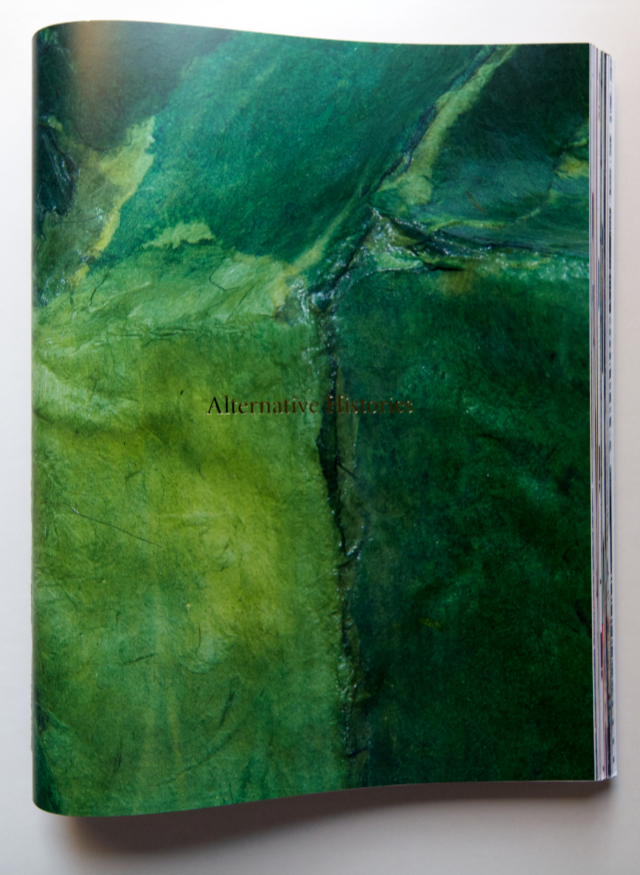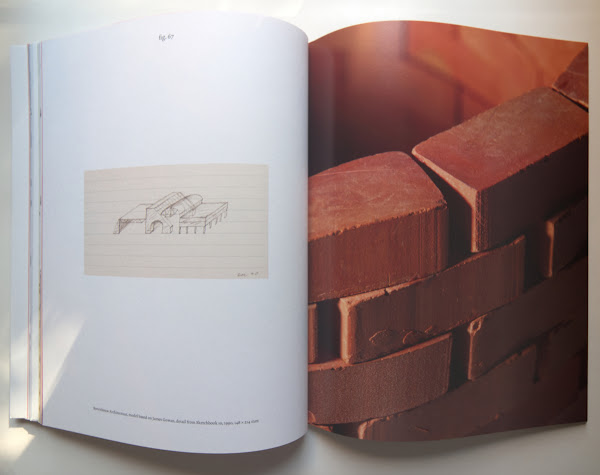Alternative Histories
Alternative HistoriesJantje Engels, Marius Grootveld (Curators); Thomas Adank, Guus Kaandorp (Photographers)Drawing Matter, 2019Paperback | 9-1/4 x 11-3/4 inches | 204 pages | English | ISBN: 978-1916152205 | £26.00PUBLISHER'S DESCRIPTION: Acknowledging that architecture is a corpus of inherited ideas, Alternative Histories began with a question: could a contemporary architect, with their own references, make a model that would respond to a drawing from the past? This book collects the 85 models produced by the same number of practices alongside the architectural drawings that prompted them, all of which are held in the UK-based archive of Drawing Matter. Taken as a whole, the responses challenge the facile understanding of concepts of reference, history or influence as drivers of contemporary architectural thinking. From methods to materials, the project opens up not only new ways of looking at the past, but also a series of conversations about how architects today shape their present. dDAB COMMENTARY: On March 23, 2019, Alternative Histories opened at the Architecture Foundation in London, with 85 architectural models by the same number of practices from the UK and Europe. That was one year after two architects from Ghent, Jantje Engels and Marius Grootveld, visited the Somerset archive of Drawing Matter, which has amassed more than 7,000 architectural drawings over the last quarter century, to select 85 drawings that the solicited architects would have as their subjects. In the introduction to the printed companion to the exhibition, Drawing Matter director Sarah Hendelman describes the process as "curating at its most ruthless — dealer's choice." The two architects sent a full-size reproduction of one drawing to each studio, asking them to respond to it with a new design in the form of a model that could be shipped — first to London, then to Brussels for a late-2019 exhibition at CIVA, then to Dublin for an exhibition that was planned for this fall at the Irish Architectural Archive but has been postponed due to the pandemic. Even if some architects were not happy with what they were given, the models don't exhibit any apparent disinterest as they turned old drawings into new models. Of course, the architects were not merely making 3D representations of the sketches, plans, and other drawings; they were interpreting the originals, thereby infusing the models with both the ideas of the drawings' creators and their own takes on architecture. The results, as documented in the close-up color photographs of Thomas Adank and Guus Kaandorp, are just that: a mixture of homage and originality, history and contemporary, the analytical and the personal. Who are we talking about? The drawings range from Charles-Dominique-Joseph Eisen's famous frontispiece for Abbé Laugier's Essai sur l'Architecture to plans by Louis I. Kahn, a sketch by Aldo Rossi, and even a plaster cast by Le Corbusier. The models are a mix of the young and the familiar, with Christ & Gantenbein, Flores i Prats, Monadnock, Sergison Bates, and Tony Fretton, to name just a few. The presentation of the 85 paired drawings models is straightforward but also very special. Each two-page spread is devoted to one pairing, with a drawing facing a model photo; for example, the first spread below shows Dierendonckblancke Architecten's response to an elevation of a system-built housing project designed by Jean Prouvé and Henri Prouvé in the early 1950s. Throughout the book, the sketches and models flip from the left to the right on each turn of the page, with the model photographs on heavyweight glossy paper and the drawings on lighter matte pages. This left/right alternating structure happens because the roughly A3-size pages are stacked — alternating glossy and matte — then sewn down the middle and folded over to create the end product. There's no cutting or gluing turning this book into a typical bound volume. It's a simple but elegant book that exhibits its making, even displaying the knot for the sewn binding in the middle of the book (third spread), where a handful of matte pages are given over to an image key for each model, an index, and a short essay by Grootveld. If that weren't enough, Alternative Histories has three covers (green, pink, white) that people can choose from when ordering. (The green, which I have, is Edelaar Mosayebi Inderbitzin Architekten's model responding to an Alvar Aalto elevation.) The sign of a well-done exhibition catalog is how much it makes readers wish they saw the exhibition in person. Given that I'm an architect who loves models, this book makes me wish time travel were real or my first-ever trip to Dublin, though not planned, happens when Alternative Histories manages to open. But the decision to photograph the models in close-ups, revealing their materiality and textures, also plays a part. It makes the book something of a tease, as if it were designed to spur readers to want to see more of the models. Whatev

Jantje Engels, Marius Grootveld (Curators); Thomas Adank, Guus Kaandorp (Photographers)
Drawing Matter, 2019
Paperback | 9-1/4 x 11-3/4 inches | 204 pages | English | ISBN: 978-1916152205 | £26.00
PUBLISHER'S DESCRIPTION:
dDAB COMMENTARY:
SPREADS:






